Today we had our glacier traversing 101 class today on the Mer de Glace in France. We started on the same train we took yesterday, and proceeded to make our way down the side of the mountain. It was an adventure for sure! In small groups we were strung together with a rope as we scaled the cliff face down to the glacier. As we followed a series of ladders and railings bolted into the ground, we passed several points that stood to recognize where the glacier had once been. This was daunting to witness as the amount that had receded was astonishingly large. In a mere blink of an eye in geological time (about 200 years), the height of the glacier has dropped over 100 meters and the edge of the glacier has diminished drastically. It’s crazy to think that about 100 some years ago we could’ve simply stepped off the train station at the top and stepped out onto the glacier. However, now we painstakingly make our way down the cliff-face in order to reach the glacier at the bottom.
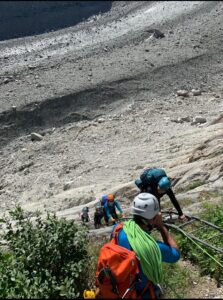
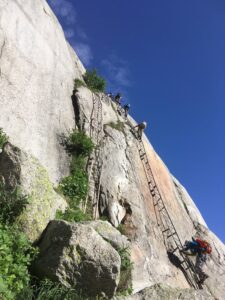
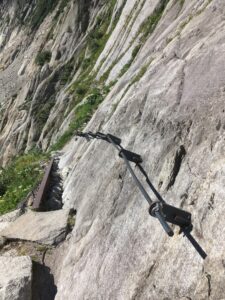
Once on the glacier, we learned navigate glaciers safely, walk with crampons, and climb with ice axes. We were impressed at the speed in which the guides could navigate and climb the glaciers but when we tried to replicate the same actions it was not as graceful. Walking around with crampons was a bit awkward at first but we learned several different ways to utilize them. We also climbed up a small glacier face all roped up using the old school method of ice axes and the more modern method of climbing axes. Sydney was an expert belayer!
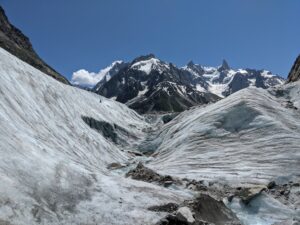
Outdoor classroom for the day.
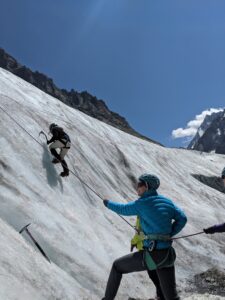
Sydney expertly belaying Anna climbing the modem way.
As I looked out the window of our hostel room after our glacier adventures and sat there staring at this monumental figure that represents much of the region’s history both archaeologically and culturally, I was struck by the thought of the Mer de Glace rapidly approaching its fate in a warming climate. I also wondered how different life would be for those making a living from these glaciers. When they go, how will the Alpine region be affected? “Tourism of the glaciers brings much revenue to this city,” says our guide on today’s expedition, “when they go, big changes will follow.” He also explained that young individuals looking to enter his line of work should perhaps think twice before doing it as a long standing career. At the rate the glaciers are receding, there may be no need for glacial mountain guides ten years from now. This long term employment as a guide as well as the economic revenue will take a drastic hit once the glaciers fully recede.
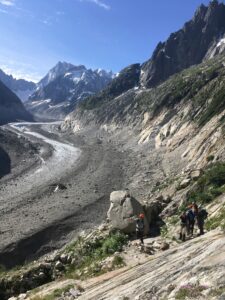
The non vegetated areas represent the height of the glacier during the little ice age.
This course is just beginning to take a look at just how important these glaciers are to the structure of these regions cultures and economies and more will for sure follow in the coming weeks.